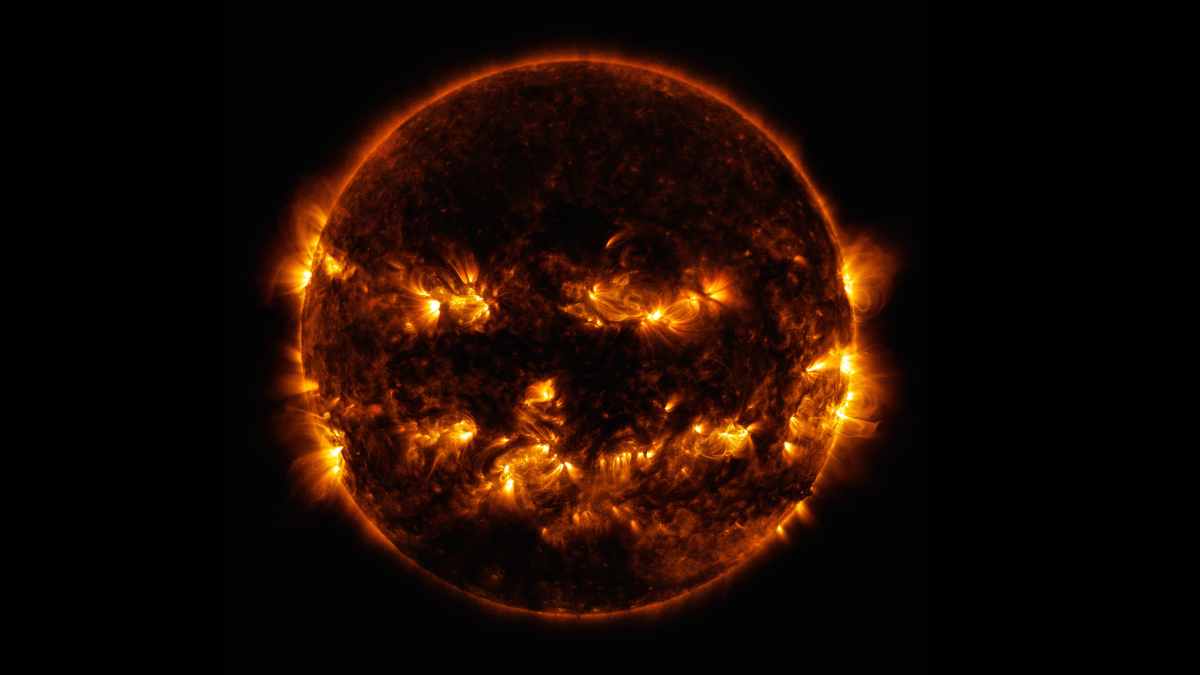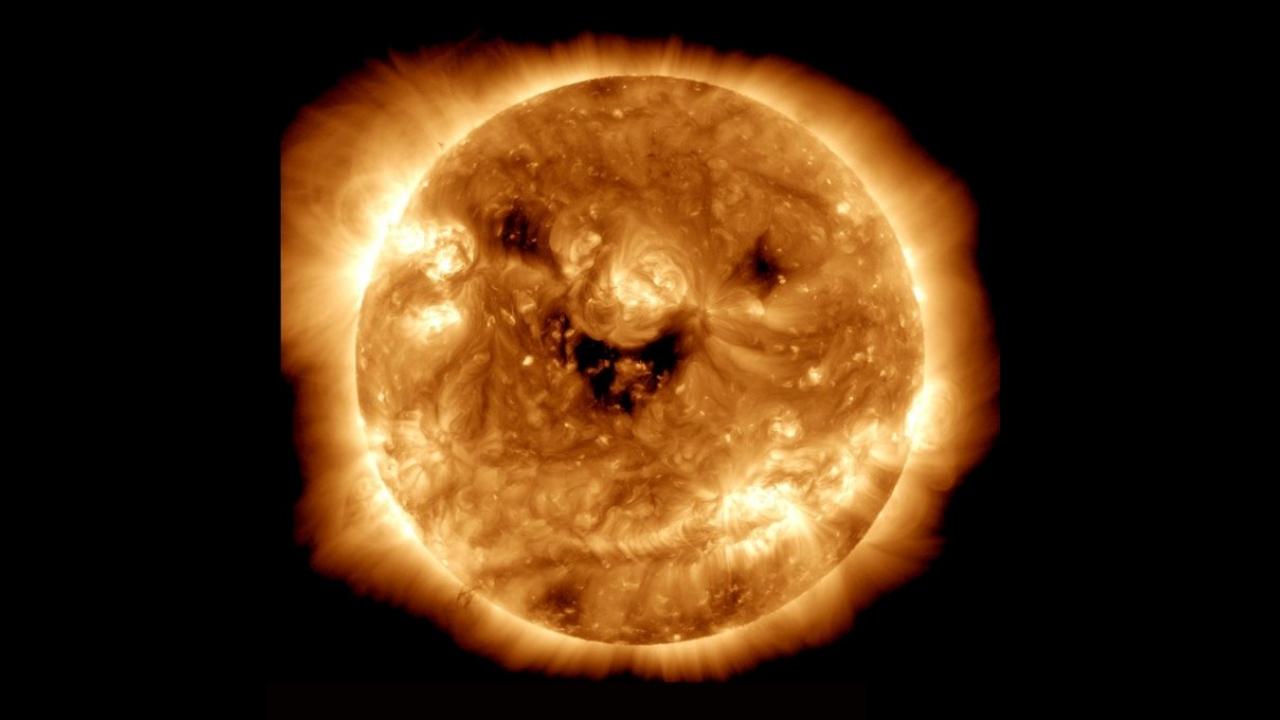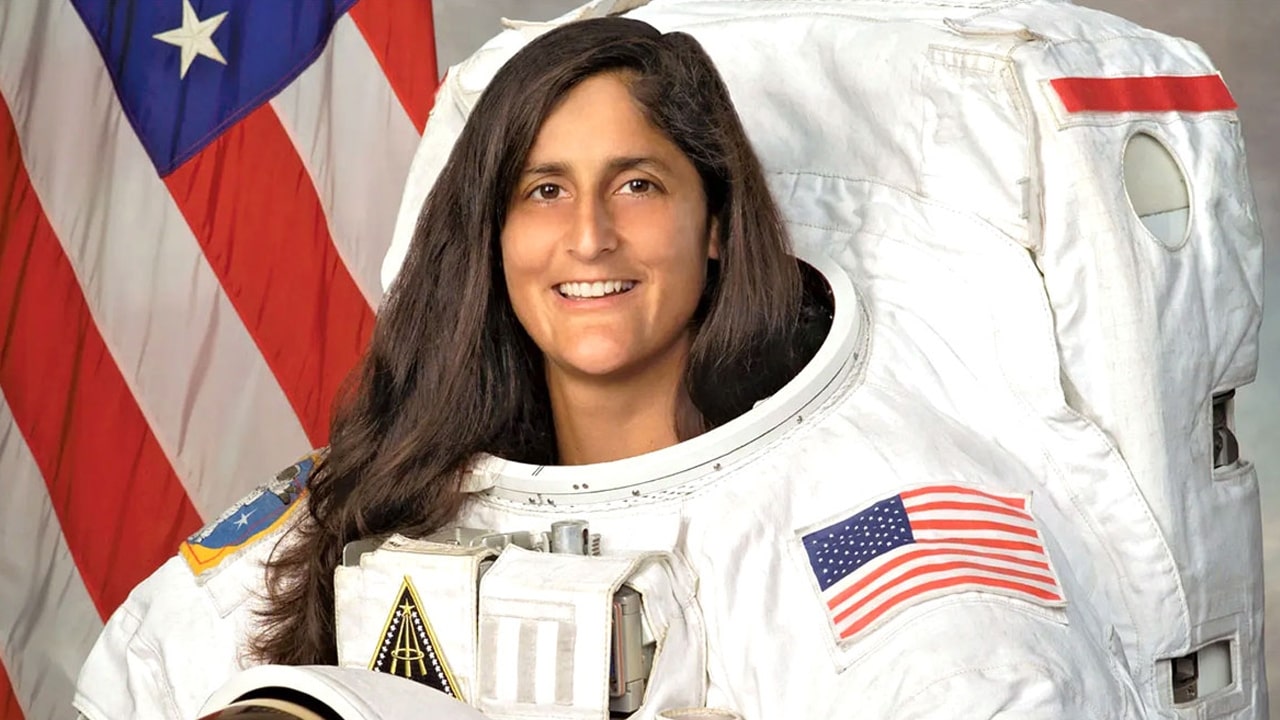When young children draw a drawing of the Sun, they also make eyes and mouths in it, and their Sun is seen smiling. But do you know that this image of children is not just a fantasy? Is it a reality? Our Sun smiles! If you do not believe this, look at this picture of NASA.
A NASA satellite has captured a picture of the Sun this week, which everyone is surprised to see. Such a pattern is visible on the Sun, seeing that the Sun is smiling. While sharing this picture, the US Space Agency also called it Smiling Sun.
NASA said in a tweet that today, NASA’s Solar Dynamics Observatory saw the sun ‘smiling’. When viewed in ultraviolet light, these dark spots visible on the Sun are called coronal holes. These are the areas from where strong solar winds blow into space.
Say cheese! ?
Today, NASA’s Solar Dynamics Observatory caught the Sun “smiling.” Seen in ultraviolet light, these dark patches on the Sun are known as coronal holes and are regions where fast solar wind gushes out into space. pic.twitter.com/hVRXaN7Z31
— NASA Sun, Space & Scream ? (@NASASun) October 26, 2022
NASA’s Solar Dynamics Observatory (SDO) aims to investigate how solar activity forms and how it affects space weather. This mission was launched on 11 February 2010. The observatory’s spacecraft measures the Sun’s internal structure, atmosphere, magnetic field and energy production.
As soon as NASA shared this picture, people reacted significantly to it. Many people have compared this picture to the Halloween pumpkin. And if we talk about India, this picture of the Sun at the Chhath festival thrilled people even more. The Sun God who is looking pleased!
Know Why The Sun Smiles
But from a scientific point of view, a warning is hidden behind this smile. Experts have warned that the way the Sun’s coronal holes are visible means that storms emanating from the Sun could hit the Earth. This Spaceweather.com says that this laughing Sun is spewing a third stream of solar wind towards the Earth.
Solar storms are explosions of different types of mass and energy arising from the surface of the Sun. They affect the Earth’s magnetic field. This is because of these storms; polar lights become more visible in the Northern and Southern hemispheres. These polar lights are also called auroras.

Let us tell you that the Solar Dynamics Observatory also took a picture of the Sun in 2014, in which the Sun looked very dangerous. That picture was also taken in October when Halloween was near. That picture of Suraj seemed quite scary.
So whether you compare this picture of the Sun with the pumpkin of Halloween, the children’s drawing or the happy sun god on Chhath, your eyes are on.











